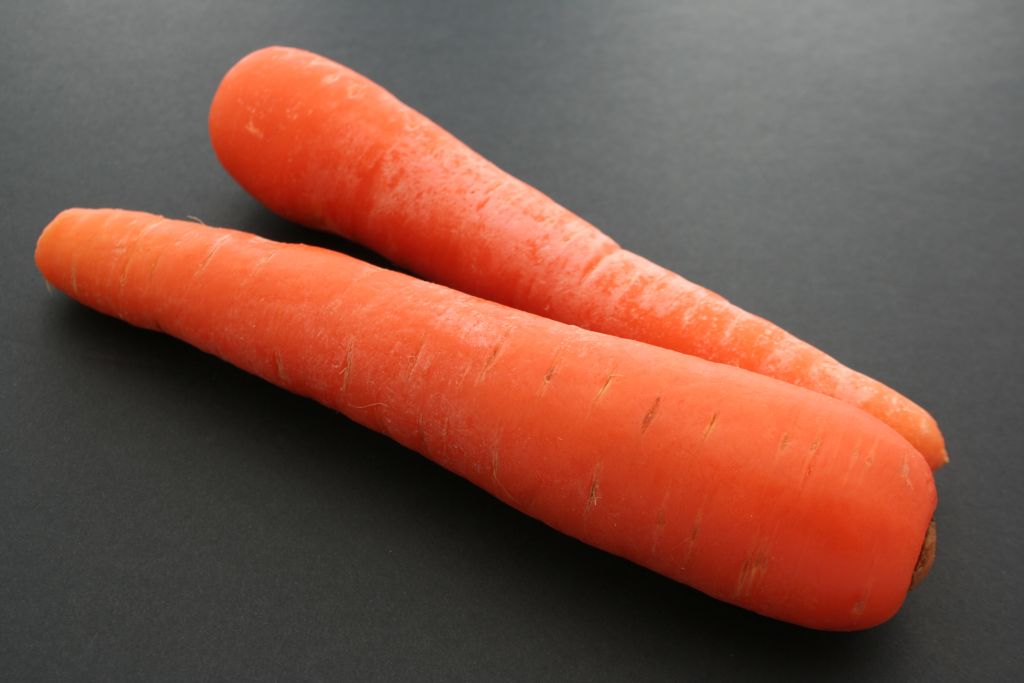Carrot

Image copyright jonsay.co.uk
Carrots are high in the compound Carotene which is where the orange colour comes from.
It is believed that carrots originated near Iran and Afghanistan. Wild carrots grow there naturally and it is believed they were cultivated over 1200 years ago. Even though the carrots we buy in supermarkets are orange, there are also red and yellow varieties. The size of the carrot also varies by variety and can be small, large, fat and thin.
What we regard as a traditional orange carrot appears to have originated in Holland around the 17th Century. The bright orange colour lends itself well to the House of Orange and it helped the carrot get a strong foothold in the Dutch diet. Almost all modern orange carrots originate from the Dutch bred variety.
Again China is at the top of production for this vegetable with over 45% of the market share. Over 33 million tonnes of carrots are grown yearly.
For best growing results carrot seeds should be sown about 2cm deep in soft soil that doesn`t contain rocks or large stones in the months March to May. Carrots take about 4 months to reach maturity.
Nutritional Information 100g of an average Carrot:-
| Calories | 42 kcal |
| Carbohydrates | 9.6g |
| Protein | 0.92g |
| Fat | 0.24g |
| Fibre | 2.8g |
| Carrot in other languages:- |
| Cebuano: | karot |
| Chinese: | húluóbo 胡萝卜 |
| French: | f carotte |
| German: | f karotte |
| Greek: | n καρότο |
| Indonesian: | wortel |
| Italian: | f carota |
| Japanese: | ninjin ニンジン |
| Nederlands: | c gele wortel, c peen |
| Norwegian: | m gulrot |
| Polish: | m marchew |
| Portuguese: | f cenoura |
| Spanish: | f zanahoria |
| Swedish: | c morot |
| Tagalog: | karot |
| Turkish: | havuç |